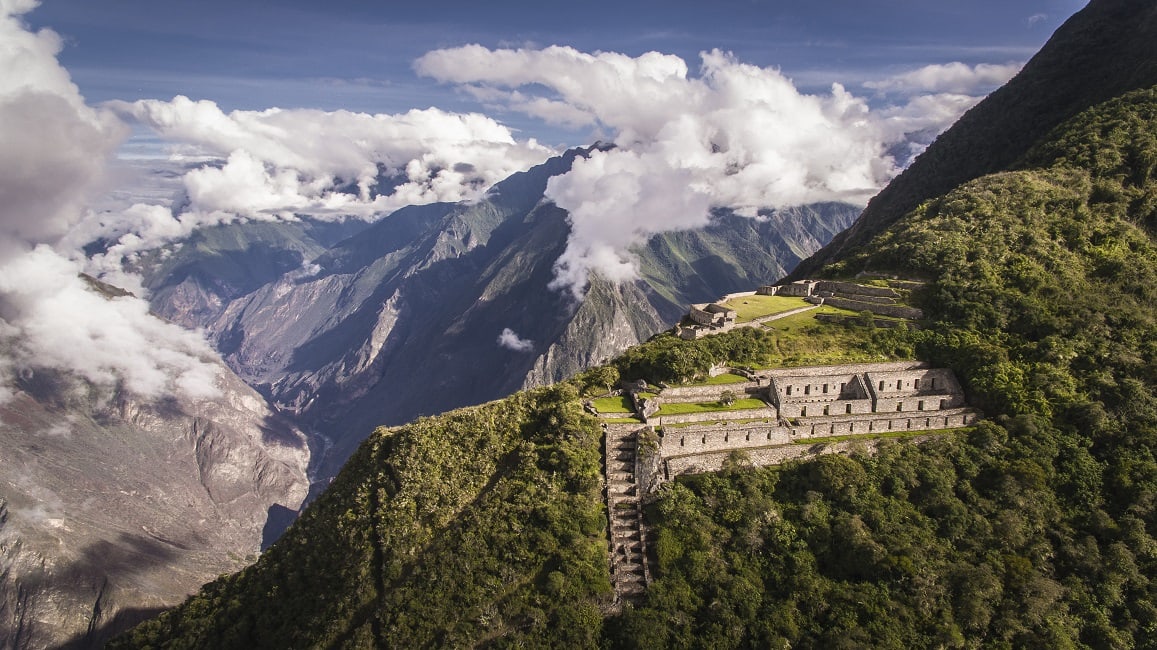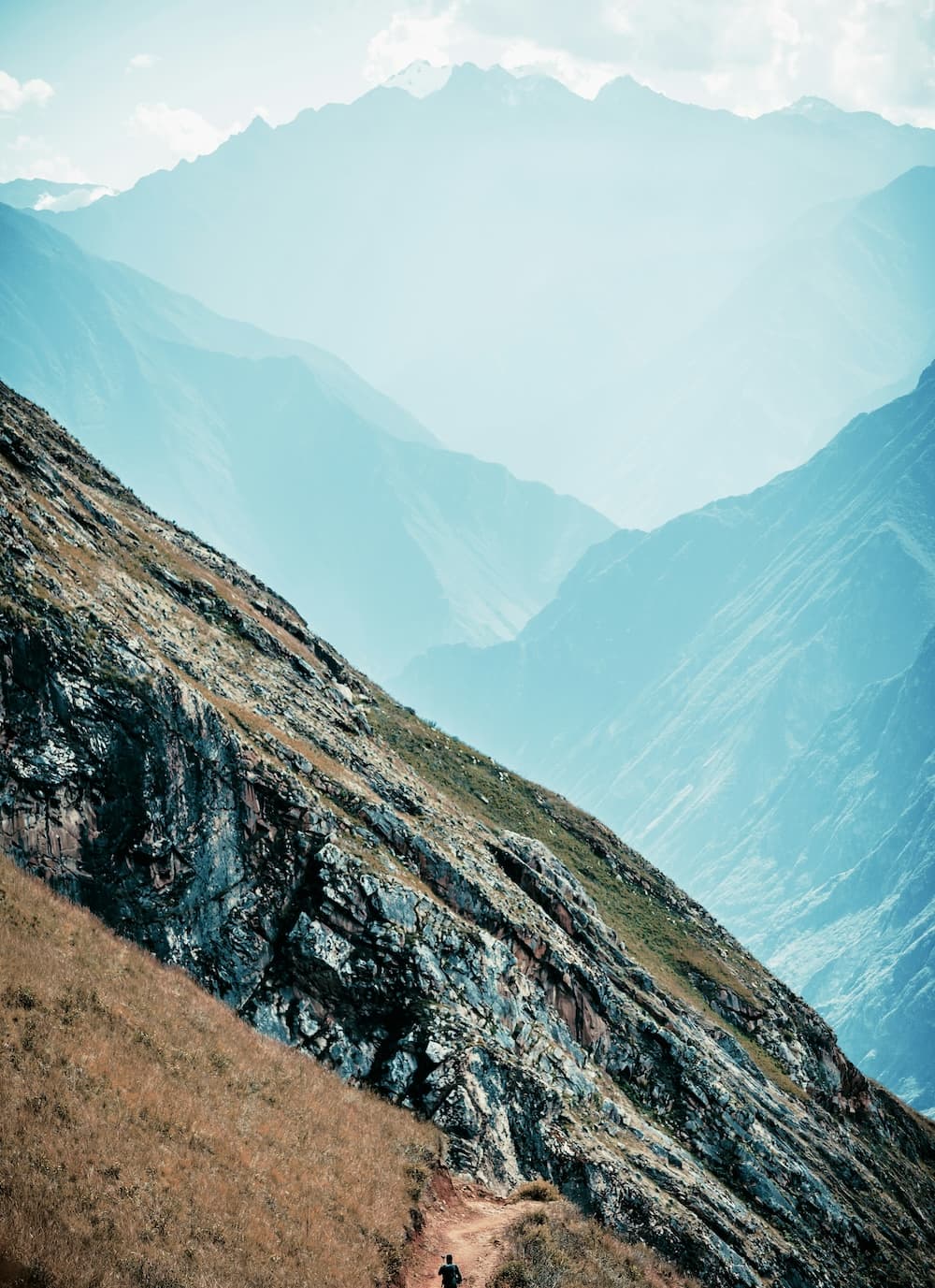"The other" Machu Picchu: the Inca City of Choquequirao
Peru's most famous tourist attraction is undoubtedly Machu Picchu, which has become increasingly popular and a bit to crowded in recent years. But there's another extraordinary archaeological gem to explore: Choquequirao. Often called "the new" or "the other" Machu Picchu, just as spectacular and much less crowded. A visit to the archaeological park Choquequirao (pronounced: Tsjo-kke-kie-rauw) is worth adding to your bucketlist. This ancient Inca city, close to Cusco, offers an unforgettable experience, much like its more famous sister.
Choquequirao: an ancient Inca city
In 1909, North American explorer Hiram Bingham (re)discovered a hidden city in the middle of the mountains: Choquequirao. Situated at over 3,000 meters (9842 ft), it is full of temples, squares, canals, terraces, and residences. The total area covers 1,800 acres, most with stunning views of the Apurimac Gorge. After Bingham's visit, Choquequirao came to the attention of the general public, and starting in the 1970s, Peru began restoring and excavating this enormous site. Picture by rainforestcruises.com
Picture by rainforestcruises.com
Shrouded in a mysterious fog, Choquequirao, which means "Golden Cradle," is an ancient city similar in architecture and layout to Machu Picchu. The complex sits on a plateau in the Vilcabamba Valley. Its name suggests Choquequirao was of great importance to the Inca civilization. As an important link between Amazon jungle tribes and cities such as Machu Picchu and Pisac, Choquequirao held strategic and spiritual significance.
Astronomical alignment
Like many Incan sites, Choquequirao is aligned with special astronomical events. The Incas were known for their sophisticated understanding of astronomy,
and they often integrated this knowledge into their sacred sites. For example, the central plaza is aligned in such a way that it likely had significance for solar events, such as solstices or equinoxes. The plaza captures the movement of the sun across the sky.
The site also contains several other structures that indicate it was a place of worship and ceremonial activities. This includes temples, platforms, and some of the terraces and platforms.
Last refuge for the Incas
Much like Machu Picchu, the exact purpose of Choquequirao remains a mystery. It is speculated to have been a fortress and ceremonial center due to its strategic location in the mountains, providing a good view of the surrounding area. Another theory suggests that Choquequirao was the last stronghold where the Incas defended their empire after the arrival of the Spaniards in the 16th century. The site, once a busy center, turned into a ghost town after the fall of the Inca Empire.
A hike straight through the wilderness
For now, the only way to reach Choquequirao is by a two-day hike. Many experienced hikers opt for a seven or even ten-day hike that includes Choquequirao on the route, but two days is the minimum. The hike begins in the village of San Pedro de Cachora, about a four-hour drive from Cusco. Although the distance between San Pedro de Cachora and Choquequirao is only 30 kilometers (19 miles), the hike should not be underestimated as it traverses wild nature.
The flora and fauna in the area are exceptional, with high temperature differences (on lower altitude) throughout the seasons. Along the way, you can admire classic Michi-Michi orchids and perhaps see condors flying by. The journey is as impressive as the destination.
Hiking with or without a Guide to Choquequirao
You have the choice of hiking to Choquequirao with or without a guide. This is different from Machu Picchu, where hiking with a guide is mandatory.
Hiking with a Guide
Most agencies offering tours to Choquequirao are based in Cusco. You can find these agencies online, but it is best to walk around town and ask around. Tours typically last four or five days, with everything arranged for you, including transportation, guide, food, and accommodation. Due to lower demand, these tours are more expensive than those to Machu Picchu, costing around 550 usd per person.
Hiking without a Guide
For those who prefer a low-budget option and are fit, hiking without a guide is possible. This allows you to complete the hike in two or three days if you are in good shape. The costs are minimal, covering only the park entrance (about 12 usd) and overnight stays. You can choose to camp or stay in hospedajes (simple accommodations). A night in a hospedaje costs an average of 10 usd, while camping costs a few dollars per night. Note that if you camp, you must bring all your camping gear.
Thanks to its high ranking in Lonely Planet's "Best Regions List 2017," Choquequirao is no longer completely unknown. However, it remains a hidden gem, mostly explored by the true Indiana Jones types among us.
Our Experience
We did the hike to Choquequirao in three days without a guide, we stayed in hospedajes to avoid carrying heavy camping gear. The hike was very tough, but we ended up being only with two others in Choquequirao. Something we will never forget.
Best time to visit
The best time to visit Choquequirao is during the dry season, which runs from May to October, providing clear and sunny weather ideal for hiking and sightseeing. The trails are less muddy and slippery, ensuring safer and more comfortable conditions. The rainy season, occurring in January, February, March, and December, brings heavy rainfall, particularly in February, which sees 278 mm (10.9 inches) of rain, making the trails challenging and often dangerous.
November is the warmest month with an average maximum temperature of 18°C (64°F), while July is the coldest, averaging 15°C (59°F). June is the driest month, with only 19 mm (0.75 inches) of precipitation, making it an excellent time for a visit. You can find more climate information about Choquequirao here.